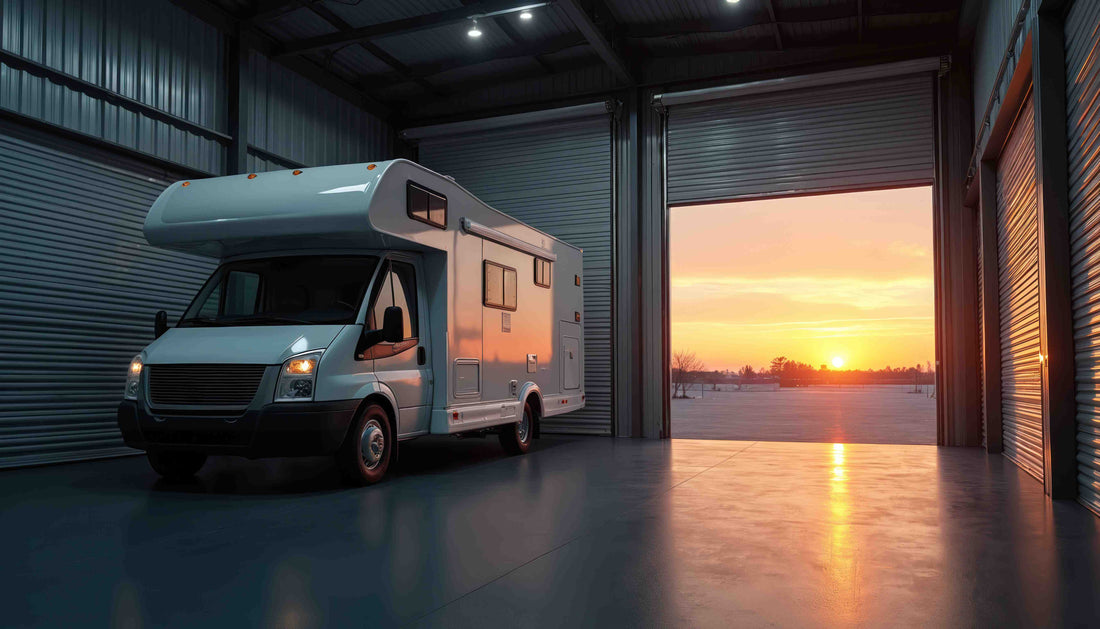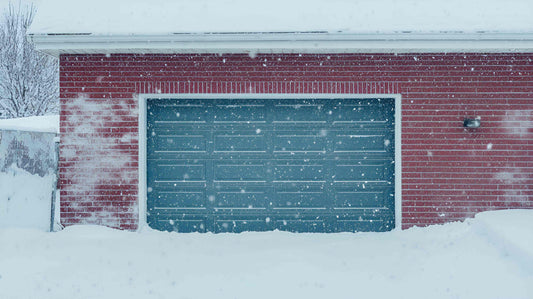
Winter Vehicle Storage: The Complete 2025 Guide (Cars, RVs, Campers)
Share
When temperatures drop and days get shorter, your vehicle faces challenges it wasn’t built for. Cold weather can drain batteries, thicken fluids, flatten tires, and invite rust. But the most overlooked — and costly — threat during winter storage comes from rodents. Mice, rats, and squirrels are notorious for slipping into parked vehicles to build nests and chew through wiring, upholstery, and insulation.
A parked vehicle quickly becomes prime real estate for pests. The longer it sits unattended, the higher the odds you’ll be dealing with damage come spring. Repairs can run into the thousands, insurance coverage is hit or miss, and storage facilities rarely take responsibility.
That’s why a solid winter storage plan is non-negotiable. With a little preparation, the right storage environment, and a proven rodent prevention strategy, you can protect your investment and avoid the stress of costly repairs. This guide walks you through the essentials—from choosing a storage option to prepping your vehicle, preventing rodents, and waking it back up in the spring. Along the way, you’ll find printable checklists, cost calculators, and links to detailed resources.
So, whether you’re tucking away a family car, a prized vintage model, or a full-size RV, consider this your playbook for stress-free winter storage.
Quick Start (TL;DR)
- Pick the right storage location for your budget and risk tolerance.
- Do basic prep: clean, check fluids, battery, tires, and use a quality cover.
- Prevent rodents with a physical barrier and tidy perimeter.
- Keep documents/insurance current and read facility fine print.

Choose the Right Storage Setup
Where you store your vehicle is the first decision you’ll need to make. Do you prioritize protection? Or is cost your main concern? There are pros and cons to each location. For a full breakdown of your options, check out our full Vehicle Storage Guide.
Or check out this quick breakdown:
| Option | Weather Protection | Rodent Exposure | Typical Cost | Best For |
|---|---|---|---|---|
| Driveway / Side Yard | Low–Medium (cover helps, but moisture remains) | High unless you use a barrier | Lowest (free at home) | Budget storage, short-term, easy access |
| Personal Garage | Medium–High (shielded from snow, not temp swings) | Medium (warm, cluttered garages attract rodents) | Low–Medium | Cars, classics, shorter storage |
| Covered Outdoor Facility | Medium (roof overhead, sides exposed) | Medium | $50–$200/month | RVs, campers, boats |
| Indoor / Climate-Controlled Facility | High (stable temps, low humidity) | Medium (verify pest control) | $150–$500+/month | Collectibles, high-value, long-term |
Curious about how much storage might actually end up costing you? We’ve got you covered!
Storage Cost Calculator
How to Prepare Your Vehicle for Storage
You wouldn’t stash a mound of cash in a storage unit without taking precautionary measures — so why would hide away your prized RV or collectible without ensuring it was properly protected?
A few hours of preparation can go a long way towards saving you thousands of dollars in possible repairs.
For a full list of to-dos, check out our Pre-Storage Checklist or start with these basics:
1. Clean & Dry Thoroughly
- Vacuum under seats, remove snacks/wrappers, and empty glove boxes. Even crumbs attract mice.
- Wash and wax exterior; rinse undercarriage if exposed to salt.
2. Address Fluids & Fuel
- Change oil before storage to avoid contaminants.
- Top off coolant and check winter mix.
- Fill tank to ~95% + add stabilizer, then run engine briefly.
3. Battery & Electrical
- Disconnect the negative terminal or use a trickle charger.
- For RVs, shut off master switches and remove accessory batteries.
4. Tires & Suspension
- Inflate to the high end of recommended PSI.
- For long storage, use tire cradles or move slightly every month.
5. Covers & Climate
- Cars: Use breathable, vehicle-specific covers (not tarps).
- RVs: Full-body covers outdoors, with padding on seams.
6. Rodent-Risk Scan
- Remove clutter near vehicle (cardboard, firewood, pet food).
- Seal gaps in garage or storage bay.
- Use traps for monitoring — but prevention works best at the perimeter.
A Special Note on RVs & Campers
RVs and campers have extra wiring, plumbing, and entry points — prime mouse territory. For additional storage and tips, check out our guides:
- Five RV Winter Storage Tips
- How to Keep Mice Out of Your Camper or RV (Complete Guide)
- RV Maintenance Schedule (When to Plan Service)
- 11 Must-Have RV Tools

Rodent Prevention That Actually Works
Every year, rodent damage costs drivers over $200 million in repairs — and stored vehicles are their prime target.
But if you remember one thing, make it this: rodent damage is preventable.
Why Vehicles Attract Rodents
Mice are driven by two things: food and shelter. Oftentimes, your parked car or stored RV can provide both.
- Warmth from engines and insulation.
- Shelter from weather and predators.
- Upholstery/paper as nesting material.
- Wires and plastics for chewing.
(Why do rodents chew car wires? Read our blog on the real reason behind rodent damage.)
Rodent Repellent Methods That Don’t Last
It’s easy to want a quick fix, but many of the most popular rodent prevention methods are unreliable, at best.
- Dryer sheets, soap, peppermint oil, sprays → scents fade quickly.
- Ultrasonic repellents → limited coverage; rodents adapt.
- Poison baits → harmful to other animals and the environment.
What Works: Physical Exclusion
No mouse, no problem. Physical prevention always beats a repellant.
- Seal any gaps in the area that a mouse could squeeze through.
- Install a Box-Kat mouse barrier around your vehicle.
- Remove food sources nearby that might attract rodents.
- Monitor with light trapping if desired.
Shop Now: Find the Box-Kat kit that suits your vehicle.
Costs, Insurance, & Fine Print
All it takes is a single determined mouse to turn even your best-laid plans to waste. And when it happens, finding a solution may be easier said than done. The horrible smell of urine may linger … and linger. Chewed wiring may cause a chain reaction you can’t predict. Hidden nesting may escape initial inspection
All this can cause repair bills to balloon.
The Real Cost of Rodent Damage
- Wiring harness: $1,200–$4,000+
- HVAC system: $800–$1,500
- Interior damage: $500–$2,500
(Try out our Rodent Damage Cost Calculator for an individual estimate)
Will Your Insurance Cover Damage
The short answer is yes, most of the time. But there are very important exceptions.
- Comprehensive insurance normally covers rodent damage, but exclusions are common.
- Negligence can void claims. Deductibles always apply.
- Rodent and pest protection is not as common for RV coverage.
(Check out our full breakdown of Rodent Insurance Coverage)
Who’s Responsible for Storage Units?
You paid a facility to store your vehicle, but rodents still found their way in … who’s left holding the bag?
- Most storage contracts exclude rodent damage.
- Climate-controlled ≠ rodent-proof. Prevention is still your job.
(Read our full guide on Who’s Responsible for Rodent Damage in Storage Units)

The Bottom Line: Prevention Beats Repair
Winter storage is about being proactive. Insurance is inconsistent, repairs are costly, and facilities rarely accept liability. Prevention is the only path that pays off every time.
Key takeaways from this guide:
- Pick a storage option that balances cost and protection.
- Follow a pre-storage checklist to safeguard against weather and wear.
- Remember rodents are the #1 overlooked risk.
- Rely on physical exclusion, not gimmicks.
Ready to protect your vehicle this winter? Shop the brand new Box-Kat 2.0!



